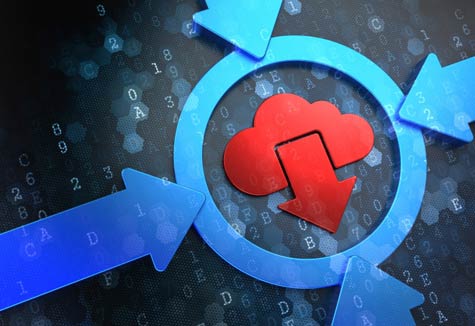Everyone is moving toward “the cloud” and it seems that most individuals and organizations have a pretty good idea of what that is and how they hope to use it.
But the cloud is not one thing, and it is most certainly not eternal. It is constantly growing and changing, with new services and new underlying technologies continually adding to and reinterpreting what we know about living and working in a cloud-based data environment. So even while we pursue our cloud strategies, there needs to be some realization that by the time the transition is complete, the cloud may not be what it appeared to be at the outset.
Key cloud providers are already tapping into this reality by pitching their services as “a new kind of cloud.” Rackspace, for example, places great stock in its ability to provide a “Managed Cloud,” which is its way of describing the specialized services and technological hand-holding it offers in contrast to the do-it-yourself commodity experiences that most providers offer. In this view, cloud infrastructure is of marginal use without services, and enterprises that fall for low-cost commodity offerings often pay the price of increased cost, complexity and aggravation on the back end.
Then, a raft of start-ups is angling to deliver new services and new functions to the cloud—in essence, changing what it does and how it operates. The Washington Post’s Linda Bernardi offered brief snapshots of four of the leading contenders: VeloCloud, Krystallize Technologies, SkyGiraffe and Indoor Atlas. These companies are working on functions like multiprovider and multicarrier operations, application unification and management of geographically dispersed environments. Just like traditional data center infrastructure before it, the cloud will be prone to disruption.
Of course, the evolution of the cloud is directly tied to the evolution of the data ecosystem itself. Those who view the cloud as merely an extension of the data center are ignoring its potential to create and intensify entirely new digital data experiences fueled by mobile and other technologies, say Cisco’s Ian Hood and Dan Kurschner. The Internet of Things (IoT) will be increasingly tied to mobile networks and these will utilize the cloud both for its scalability and resource flexibility to store, process and analyze the massive amounts of data that will be coming in. So more than anything, the cloud will have to chart its own path to enterprise productivity and bottom-line value, rather than simply lowering the cost of today’s data environment.
This is how Cisco came up with the “Fog Computing” idea. With everything from thermometers, car engines, medical devices and anything else electronic feeding data to the enterprise from around the world, backhaul will be a huge problem, says the company’s Stephen Lawson. To manage this with local resources is virtually impossible, so an organization looking to capitalize on Big Data and the IoT will have to embrace diverse, distributed cloud computing to handle the load. Fog computing has Cisco combining an operating system like Linux with its own Internetworking Operating System (IOS) to create an intelligent, distributed computing infrastructure capable of connecting directly to a wide range of devices using a variety of protocols. The result is an extensive worldwide cloud optimized for massive data loads, real-time analysis and dissemination.
The cloud, then, is an apt metaphor for what is happening to IT infrastructure. It is ephemeral, constantly shifting and moving, and before you know it, the image that you thought you were looking at has morphed into something else. This presents a considerable challenge to IT professionals accustomed to the stability of the physical plant, but it is necessary in order to match infrastructure to the rapidly evolving service and application layers.
One thing is certain, though: The evolution of the cloud will not be boring.
Arthur Cole writes about infrastructure for IT Business Edge. Cole has been covering the high-tech media and computing industries for more than 20 years, having served as editor of TV Technology, Video Technology News, Internet News and Multimedia Weekly. His contributions have appeared in Communications Today and Enterprise Networking Planet and as web content for numerous high-tech clients like TwinStrata, Carpathia and NetMagic.




